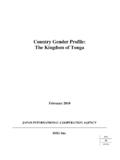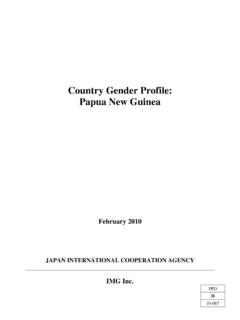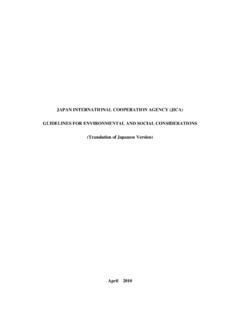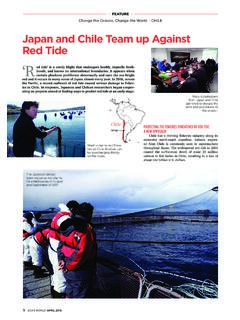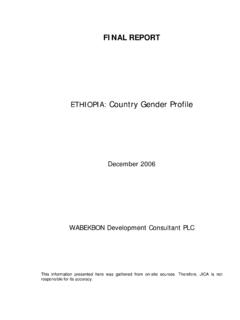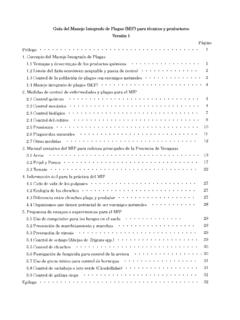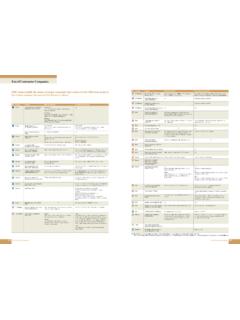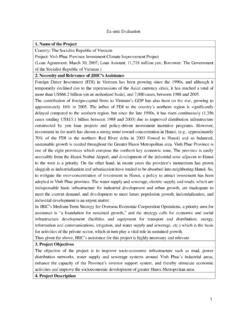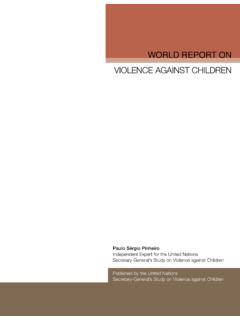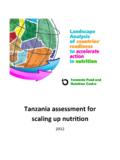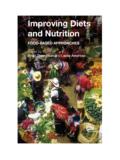Transcription of MALAWI: Country Gender Profile - JICA - 国際協力 …
1 FINAL REPORT malawi : Country Gender Profile January 2007 Seodi White (UB) Gender and Dev (Sussex) Attorney-at-Law, Gender and Human Rights Specialist National Coordinator Women and Law In southern Africa Research and Educational Trust- malawi The information presented here was gathered from on-site sources. Therefore, JICA is not responsible for its of Contents malawi List of Abbreviations 1. Basic Profile 1-1 Socio-Economic Profile ..1 1-2 Health 3 1-3 Education Profile .. 4 2. Government Policy on Gender and the National Machinery on Gender 2-1 General Situation of Women in 5 2-2 Government Policy on 7 2-3 National Gender Machinery: The Ministry of Women Child 8 3.
2 Current Situation of Women by Sector 3-1 Education .. 11 3-2 15 3-3 Agriculture, Forestry, and 19 3-4 Economic 22 3-5 Governance and Women s Human Rights .. 25 4. Gender Projects .. 28 5. Gender Information Sources 5-1 List of Organizations/Individuals related to 29 5-2 List of Reports and References related to 32 6. References .. 35 7. Glossary of Terms .. 37 iList of Abbreviations AIDS Acquired Immune Deficiency Syndrome CHRR Centre for Human Rights and Rehabilitation CIDA Canadian International Development Agency CRECCOM Creative Centre for Community Mobilization DFID Department for International Development EHP Essential Health Package FPE Free Primary Education GAD Gender and Development GBV Gender Based Violence GER Gross Enrolment Ratio GESP Gender Equality Support Programme GoM Government of malawi HIV Human Immunodeficiency Virus IHS Integrated Household Survey ILO International Labour Organisation MARDEF malawi Rural Development Fund MDG S Millennium Development Goals MDHS
3 malawi Demographic and Health Survey MFI Micro Finance Institutions MGDS malawi Growth and Development Strategy MGTT malawi Gender Trainers Team MMR Maternal Mortality Rate MoEVT Ministry of Education and Vocational Training MoH Ministry Of Health MPRSP malawi Poverty Reduction Strategy Paper NAC National AIDS Commission NER Net Enrolment Ratio NGOGCN Non Governmental Organizations Gender Coordinating Network NGP National Gender Policy NORAD Norwegian Agency for International Development NSO National Statistical Office QECH Queen Elizabeth Central Hospital SADC Southern Africa Development Community SARDC Southern Africa Research and Documentation Centre SRGBV School Related Gender Based Violence SSP Safe Schools Programme SWAP Sector Wide Approach TEVETA Technical, Entrepreneurial, Vocational Education and Training Authority UNDP United Nations Development Programme UNFPA United Nations Population Fund UNICEF United Nations Children s Fund UNIMA University of malawi USAID United States Agency for International Development VDC Village Development Committee WHO World Health Organization WIDSAA Women in Development Southern Africa Awareness WLSA Women and Law in Southern Africa Research and Educational Trust ii1.
4 Basic Profile This section presents the available statistical data on the following sectors, the socio economic sector, the health sector and the education sector. Most of the statistics presented are mainly obtained from the World Bank website, malawi Growth and Development Strategy which is the overarching policy for economic growth and poverty reduction and for localizing the millennium development goals (MDG s), the malawi Health and Demographic Survey (2004) and the Integrated Household Survey (2005). Where necessary information and statistics from other sources has been highlighted. 1-1 Socio-Economic Profile Economic Indicators: Source World Bank Year GNI/Capita Growth rate of Real GDPGDP (Current $) GDP/Growth Rates of Deflators (%) 2004 Billion 2005 Billion Demographic Indicators.
5 Source World Bank Year Total Population % of female Population Population growth rateTotal Fertility Rate Life Expectancy 2004 Million 52 2005 Million 52 Not available Public Sector Expenditure: Source World Bank Year Health Agriculture Defence Service 2004 Not available 2005 Not available Labour Indicators Percentage distributions of persons aged 15 years and over in wage employment according to background characteristics.
6 2005 Source IHS 2005 Background Characteristics Professional and Technical Administrative and managerial Clerical and RelatedServiceSales Agriculture, Fishermen etc Production and Related Labourer etc Total Male Female Labour Force Participation rate, Employment rate.
7 Unemployment rate among males and females above 15 Years of Age; 2005 Source IHS 2005 Labour Force Participation rate Employment rate Unemployment rate Male Female All Male FemaleAll Male Female All Participation of Women in Decision Making Representation Of Women In Politics And Decision Making Positions In malawi s Public Sector As At 22nd August 2006: Source Ministry Of Women and Child Development Lilongwe malawi POSITION TOTAL MALE FEMALE % MALE % FEMALE Cabinet Ministers 22 16 6 72,7 27,3 Deputy Minister 14 13 1 92,9 7,1 Members of Parliament 191 164 27 85,9 14,1 Principal Secretaries 51 46 5 90,2 9.
8 8 Ratification and Signature of International Law for Women The Convention On the Elimination of all Forms of Discrimination Against Women (CEDAW) 1979 1987 The SADC Declaration On Gender and Development and Its addendum 1997 The Protocol to the African Charter on Human and Peoples Rights on the Rights of Women In Africa 2005 Law For the Benefit of Women The Prevention of Domestic Violence Act (2006) Protects Women From Acts and or omissions of Violence in the Home WID/GAD Policy The National Gender Policy (2000-2005) An advocacy tool for a holistic approach for equitable participation of men, women, boys and girls in the development malawi Growth and Development Strategy (2006) Advocates for equitable participation of women in the decision making areas.
9 National Gender Machinery The Ministry of Women and Child Development The line Ministry charged with the responsibility of coordinating all Gender related programmes in the Country 1-2 Health Profile National HIV Prevalence Estimates, 20051 Indicator Value Low High National adult prevalence(15-49) 12% 17% Number of infected adults 790,000 660,000 950,000 Number of infected adult women (15-49)440,000 370,000 530,000 Urban adult prevalence 18% 26% Number of infected urban adults 240,000 200,000 290,000 Rural adult prevalence 10% 15% Number of infected rural adults 550,000 458,000 660,000 Number of infected children (0-14) 83,000 69,000 100,000 Number infected over age 50 59,000 49,000 71,000 Total HIV+ population 930,000 780,000 1,120,000 Number infected over age 50 59,000 49,000 71,000 Total HIV+ population 930,000 780,000 1,120,000 Source (NAC.)
10 2005) Maternal Mortality rate Source MDHS 2000/2004 Year Rate 2000 1120/100,000 2004 984/100,000 Nutrition Indicators for Adult Females and Males in malawi Source: Progress on the Beijing +10 Report by Ministry of Gender and Community Services 2004 Nutrition Indicator Females Males Underweight 24% 37% Waist Hip ratio 20% 30% BMI <18 35% 33% Vitamin A Deficiency 90% 82% Anemia 27% 13% Iron Deficiency Anemia 2% 1 NAC has completed the surveillance report on HIV prevalent rates for 2006.
